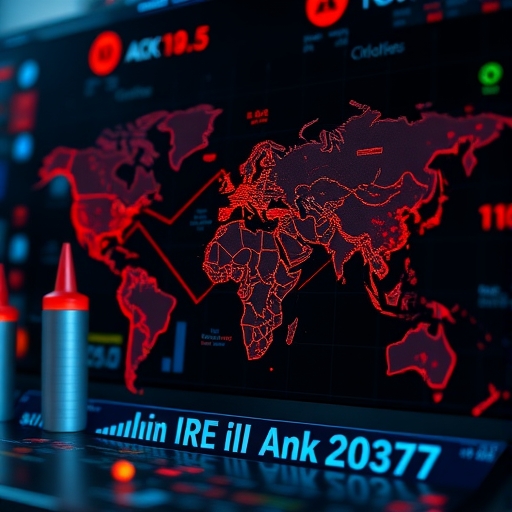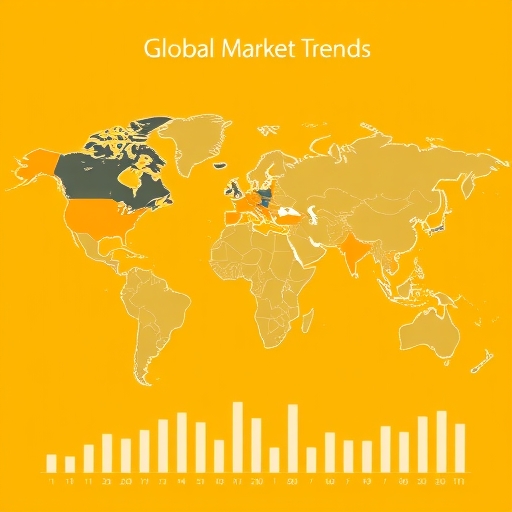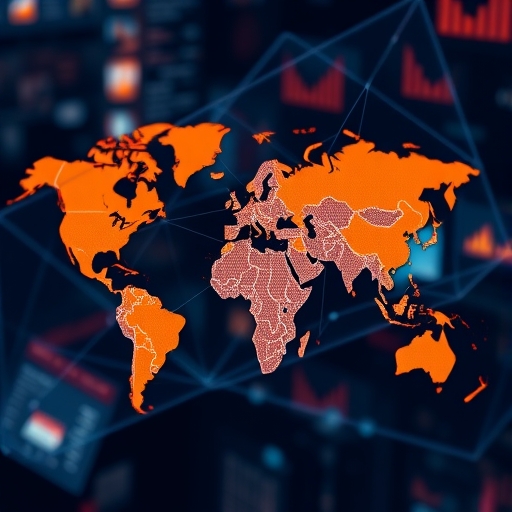Navigating Today’s Commodity Markets: The AI Advantage and Price Index Insights
Are you wondering how global events and new technologies are shaping the prices of everything from the gasoline in your car to the food on your plate? In today’s dynamic global markets, understanding commodity pricing is more complex and crucial than ever. Characterized by rapid shifts, geopolitical tensions, and persistent inflation, traditional analytical methods are often outpaced by the sheer velocity and complexity of market dynamics. This article will explore the current state of commodity markets, from individual price movements to broader index performance, and delve into how advanced Artificial Intelligence (AI) applications are transforming commodity trading. We’ll uncover how AI offers unprecedented precision in price signal detection, risk assessment, and strategic positioning, providing valuable insights for anyone interested in the future of commodities and investment. 
Current Commodity Market Dynamics: A Snapshot of Key Trends
Let’s start by taking a look at recent movements in the commodity landscape. The Material Price Index (MPI), compiled by S&P Global Market Intelligence, offers a broad view of raw material prices. While it saw a slight weekly increase of 0.1% recently, it’s important to note that the MPI remains 5.0% lower year-over-year. This indicates a general easing of commodity prices over the past twelve months, suggesting a period of adjustment after earlier peaks. Interestingly, even with this overall easing, seven out of ten subcomponents of the MPI experienced a climb last week, showing varied movements beneath the surface.
To illustrate the recent shifts, here’s a brief overview of the MPI’s performance:
| Metric | Value | Interpretation |
|---|---|---|
| MPI Weekly Change | +0.1% | Slight weekly increase |
| MPI Year-over-Year | -5.0% | General easing over 12 months |
| Subcomponents Climbing | 7 out of 10 | Varied movements beneath surface |
Individual commodities tell a more detailed story. Nonferrous metals, for instance, have returned to growth, with their sub-index climbing 0.7%. A standout example is zinc, which saw prices on the London Metal Exchange (LME) rise by 1.6% to an average of $2821.10. This surge was largely driven by a significant depletion of LME zinc stocks, reaching a two-year low. This demonstrates how even with a projected market supply surplus, immediate inventory tightness can create strong upward price pressure. In contrast, lumber prices on the Chicago Mercantile Exchange (CME) declined significantly by 7.9%, marking its largest weekly fall in four months. This drop was attributed to weak demand, especially in US domestic construction, and widespread buyer stockpiling in anticipation of higher import tariffs, highlighting how policy expectations can directly influence market behavior.
The contrasting movements of these commodities highlight diverse market drivers:
- Zinc’s price increase was primarily due to a significant depletion of LME stocks, reaching a two-year low.
- Lumber’s decline was driven by weak demand in US domestic construction and buyer stockpiling.
- These examples underscore how immediate supply-demand dynamics and policy expectations can create distinct price pressures.
Beyond individual commodities, broader economic data also provides context. According to World Bank data, the overall energy price index eased by 0.6% in July, primarily due to a 6% decline in European natural gas prices. The non-energy price index also dipped by 0.4%. However, not everything was down: food prices rose by 0.9%, while beverages fell by a substantial 10.8%. Raw materials remained broadly unchanged, but fertilizer prices increased significantly by 8.1%, which could signal future cost pressures for the agricultural sector. Meanwhile, metal and precious metal prices edged up by 1.5% and 0.4% respectively. These varied movements underscore the complex interplay of supply, demand, and macroeconomic factors at play across different commodity sectors. 
A summary of key World Bank commodity price movements in July:
| Category | Change (%) | Key Driver/Note |
|---|---|---|
| Overall Energy Index | -0.6% | Mainly due to European natural gas decline |
| European Natural Gas | -6.0% | Significant decline |
| Non-Energy Index | -0.4% | General dip |
| Food Prices | +0.9% | Saw an increase |
| Beverages | -10.8% | Substantial decrease |
| Fertilizer Prices | +8.1% | Signaling future agricultural cost pressures |
| Metal Prices | +1.5% | Modest increase |
| Precious Metal Prices | +0.4% | Slight increase |
In a broader context, commodities, as represented by the S&P GSCI (Standard & Poor’s Goldman Sachs Commodity Index), have delivered double-digit returns in 2024. This performance has positioned them as a valuable diversification tool against stubborn inflation, which has been a persistent concern for many economies. Energy, particularly crude oil, continues to play an outsized role in the overall performance of broad commodity indices. We’ve also seen specific commodities like cocoa experience substantial price increases, and gold reaching all-time highs in late 2023, with silver also performing strongly. This highlights the ongoing appeal of commodities as a real asset class during times of economic uncertainty and inflationary pressures. 
The Transformative Power of Artificial Intelligence in Commodity Trading
How do market participants keep up with such rapid and complex changes? This is where Artificial Intelligence (AI) comes in. AI systems are no longer just a futuristic concept; they are providing significant competitive advantages through advanced market intelligence. These sophisticated systems can process vast streams of information, from financial data to news articles and social media, translating this complex data into actionable trading insights. For professionals in energy trading, commodity analysis, and trading desk operations, AI is becoming an indispensable tool for maintaining an edge.
Consider some of the specific ways AI is being used in commodity trading:
- Real-time Price Signal Detection: AI excels at identifying subtle market movements and optimal entry or exit points. For example, an AI system can detect a surge in Liquefied Natural Gas (LNG) prices early, allowing traders to react proactively.
- Geopolitical Risk Assessment: Geopolitical developments, such as tensions between Iran and Israel, can significantly impact commodity prices like Brent crude and LNG. AI processes political intelligence and diplomatic communications to assess these implications, helping traders anticipate and price in such risks.
- Cross-Market Correlation Intelligence: Markets don’t operate in isolation. AI can identify dynamic correlations between different benchmarks, such as Brent crude, WTI (West Texas Intermediate), TTF (Title Transfer Facility) gas, and Henry Hub. Understanding these relationships allows for more informed trading strategies and risk management.
- Sentiment-Driven Market Intelligence: Beyond hard data, market sentiment plays a crucial role. AI analyzes market sentiment using sophisticated natural language processing, often identifying shifts that precede fundamental supply-demand changes. For instance, an AI might detect a sentiment-driven wheat short squeeze before it’s fully apparent through traditional analysis.
The benefits of integrating AI are clear: it enables more proactive strategies, provides early warnings of market shifts, enhances risk management, helps capture emerging opportunities, and allows for more effective management of market volatility. We can see how this technological leap is fundamentally changing the way traders interact with the market, moving from reactive responses to predictive insights.
AI in Action: Sector-Specific Insights and Predictive Power
Let’s dive deeper into how AI is applied across different commodity sectors, providing granular, actionable intelligence:
- Agricultural Volatility Forecasting: Agricultural commodities, such as wheat, are highly susceptible to volatility due to factors like weather patterns, crop yields, and speculative positioning. AI systems integrate diverse data points, including meteorological forecasts, satellite imagery, and market positioning reports, to provide predictive insights. This allows traders to better understand the drivers behind potential rallies or declines, such as identifying the convergence of supply constraints and export dynamics that might fuel a wheat rally.
- Metals Market Structural Supply Analysis: In industrial metals like copper, AI can identify acute supply constraints and inventory changes with remarkable precision. By analyzing data from exchanges like the LME, as well as global production and smelting bottlenecks, AI can pinpoint the underlying structural issues driving sustained price increases. This is crucial for understanding why, despite broader economic trends, certain metals might experience significant upward pressure due to specific supply-side challenges.
- Sentiment-Driven Market Intelligence: As mentioned, sentiment can be a powerful market mover. AI leverages advanced techniques, including large language models, to analyze vast amounts of textual data from news, reports, and social media, extracting subtle shifts in market mood. This capability can precede traditional fundamental analysis, helping to identify scenarios like the wheat short squeeze triggered by an improving sectoral sentiment, allowing traders to position themselves ahead of the curve.
The true power of AI comes not just from its analytical capabilities but also from its ability to be seamlessly integrated. AI intelligence can be directly integrated with existing trading infrastructure via APIs (Application Programming Interfaces). This allows for real-time decision-making, ensuring that the insights generated by AI are immediately actionable within a trader’s existing workflow, minimizing latency and maximizing responsiveness.
Understanding Commodity Price Indices: A Foundation for Investors
Now, let’s turn our attention to the tools that help us measure and understand the broader commodity market: commodity price indices. What exactly is a commodity price index? Simply put, it’s typically a fixed-weight index or a weighted average of selected commodity prices, which can be based on either spot prices (for immediate delivery) or futures prices (for future delivery). These indices are designed to represent a broad commodity asset class or specific subsets, tracking a basket of commodities much like stock market indices track a basket of stocks.
For investors, commodity price indices offer a unique proposition. They provide a way to gain passive exposure to the commodity market, often through instruments like total return swaps or commodity index funds. This exposure can offer several benefits: historically, commodities have shown a negative correlation with equities and bonds, meaning they tend to move in the opposite direction or independently of traditional asset classes. This characteristic makes them a valuable tool for portfolio diversification. Furthermore, commodities are often seen as a strong inflation protection mechanism, as their prices tend to rise when inflation heats up, helping to preserve purchasing power.
The history of commodity indices is rich and evolving. The first commodity futures index, the Dow Jones futures index, was introduced in 1933 (though backfilled to 1924). This was followed by the creation of the CRB Index (Commodity Research Bureau Index) in 1958, which became another widely recognized benchmark. A significant development came in 1991 with the launch of the Goldman Sachs Commodity Index (GSCI), now known as the S&P GSCI, which gained prominence for its heavy weighting in energy. Later, the Dow Jones AIG Commodity Index (which later became the Bloomberg Commodity Index) emerged, offering a different weighting methodology. Notable academic research, such as that by Gorton and Rouwenhorst in 2005, further explored the relationship between commodity futures and their performance relative to stocks and inflation, solidifying their place in investment theory.
Here’s a comparison of some prominent commodity indices:
| Index Name | Launch Year | Key Characteristic |
|---|---|---|
| Dow Jones Futures Index | 1933 (backfilled to 1924) | One of the earliest commodity futures indices |
| CRB Index | 1958 | Widely recognized benchmark |
| S&P GSCI (formerly Goldman Sachs Commodity Index) | 1991 | Known for heavy energy weighting |
| Bloomberg Commodity Index (formerly Dow Jones AIG) | Later than GSCI | Offers a different weighting methodology |
Commodity indices typically categorize their constituents into several groups:
- Energy: Includes commodities like Crude Oil (Brent and WTI), Natural Gas (Henry Hub and TTF), and related products such as gasoline and heating oil.
- Metals: Divided into Base Metals (e.g., Copper, Zinc, Nickel, Lead) and Precious Metals (e.g., Gold, Silver).
- Agriculture: Encompasses a wide range, including Grains (e.g., Corn, Wheat, Soybeans), Softs (e.g., Coffee, Sugar, Cocoa), and Livestock (e.g., Hogs, Live Cattle).
Today, there are numerous commodity indices available, each with its own methodology and focus, including the Bloomberg Commodity Index, S&P GSCI, Deutsche Bank Liquid Commodity Index, and the World Bank Commodity Price Index, among others. These indices offer investors various ways to track and gain exposure to the diverse and dynamic world of commodities.
Commodities as a Strategic Asset: Diversification and Inflation Hedge
Why should you consider commodities in your investment portfolio? Beyond their direct utility, commodities play a strategic role, particularly for portfolio diversification and as a hedge against inflation. As we noted earlier, commodities, as tracked by the S&P GSCI, have delivered double-digit returns in 2024. This strong performance, especially during periods of persistent inflation, underscores their value. 
One of the most compelling reasons to include commodities is their historical tendency for a negative correlation with traditional asset classes like equities and fixed income (bonds). This means that when stocks and bonds are falling, commodities might be rising, or at least moving differently, thereby smoothing out overall portfolio returns and reducing risk. For example, during Q3 2023, commodities rose by 16% even as equities and fixed income declined, demonstrating their diversification benefits in action.
Moreover, commodities are often considered a classic hedge against inflation. When the costs of goods and services rise (inflation), the prices of the raw materials used to produce them (commodities) also tend to increase. This makes commodities an attractive asset class when inflation is a concern, helping investors maintain their purchasing power. Macroeconomic factors, such as the actions of the Federal Reserve (Fed) and changes in the Consumer Price Index (CPI), are key influences on commodity market performance and investor strategies. Expectations around Fed rate cuts, for instance, can significantly influence market sentiment and commodity prices.
The commodity landscape is also evolving with global trends. The rise of new technologies and the push for an energy transition are creating new demands for specific raw materials. A prime example is lithium, a crucial component for electric vehicle batteries. Its growing importance is reflected by its recent addition to the S&P GSCI Electric Vehicle Metals Index, highlighting how commodity benchmarks are adapting to reflect these changing market dynamics and investment opportunities in the green economy.
Integrating AI for a Future-Ready Trading Strategy
The discussion so far highlights the intricate nature of commodity markets and the profound impact of AI. But how do we bridge the gap between AI’s analytical power and practical trading decisions? The key lies in seamless integration. For any organization looking to thrive in today’s commodity markets, integrating AI-driven insights directly into existing trading infrastructure is not just an advantage—it’s becoming a necessity. This means utilizing enterprise-grade API connectivity to ensure that real-time updates on price signals, risk assessments, and market sentiment flow directly into a trader’s dashboard and decision-making systems.
This level of integration transforms reactive strategies into proactive, high-performance operations. Instead of manually sifting through mountains of data and news, traders can leverage AI to flag critical events, predict potential price movements, and identify optimal entry and exit points with unprecedented speed and accuracy. This allows for rapid execution of trades and sophisticated risk management, significantly enhancing decision-making within existing workflows. The strategic imperative for organizations to adopt these advanced analytical tools is clear: to remain competitive, capture fleeting commodity pricing opportunities, and effectively manage associated risks in a rapidly changing global landscape.
As we look to the future, the continuous development of AI capabilities, coupled with their deeper integration into trading platforms, will likely lead to even more sophisticated strategies. We can anticipate AI systems becoming even better at identifying complex cross-market correlations, predicting the impact of nuanced geopolitical shifts, and even adapting to entirely new market paradigms as global economies continue to evolve. For those who embrace this technological revolution, the future of commodity trading promises to be both challenging and incredibly rewarding.
Conclusion
The integration of Artificial Intelligence into commodity pricing is not merely an enhancement but a fundamental evolution in market operations. As we’ve seen across various market examples—from the geopolitical sensitivity of LNG and Brent crude to the structural supply constraints impacting copper and zinc—AI systems consistently identify opportunities and risks with a precision that traditional methods often miss. They provide critical market intelligence, enabling real-time detection of price signals, sophisticated risk assessment, and the ability to leverage sentiment analysis for predictive insights. Moreover, understanding the role and history of commodity price indices like the S&P GSCI is vital for appreciating commodities as a powerful diversification tool and an effective inflation hedge in a well-rounded investment portfolio.
For energy and commodity trading professionals, embracing these advanced analytical capabilities is transitioning from a competitive advantage to an essential infrastructure. It enables superior performance in capturing commodity pricing opportunities and effectively managing associated risks in a rapidly changing global landscape. As markets become increasingly complex and interconnected, the synergy between human expertise and AI-driven insights will be the cornerstone of successful commodity strategies.
Disclaimer: This article is intended for informational and educational purposes only and does not constitute financial advice. Commodity markets are highly volatile, and investing in commodities involves significant risks, including the potential loss of principal. Always consult with a qualified financial professional before making any investment decisions.
Frequently Asked Questions (FAQ)
Q: How does AI specifically help in predicting commodity price movements?
A: AI systems process vast amounts of data, including financial news, social media, and market sentiment, to identify subtle patterns and real-time price signals that traditional methods might miss. This allows for more precise forecasting and proactive trading decisions.
Q: What is the Material Price Index (MPI) and what does it indicate?
A: The Material Price Index (MPI), compiled by S&P Global Market Intelligence, provides a broad view of raw material prices. It indicates general trends in commodity prices, with recent data showing an overall easing year-over-year despite some weekly increases in subcomponents.
Q: Why are commodities considered a good tool for portfolio diversification and inflation protection?
A: Commodities historically exhibit a negative correlation with traditional assets like equities and bonds, meaning they often move independently, which helps smooth out overall portfolio returns. They also act as an inflation hedge because their prices tend to rise when inflation increases, helping to preserve purchasing power.



No responses yet